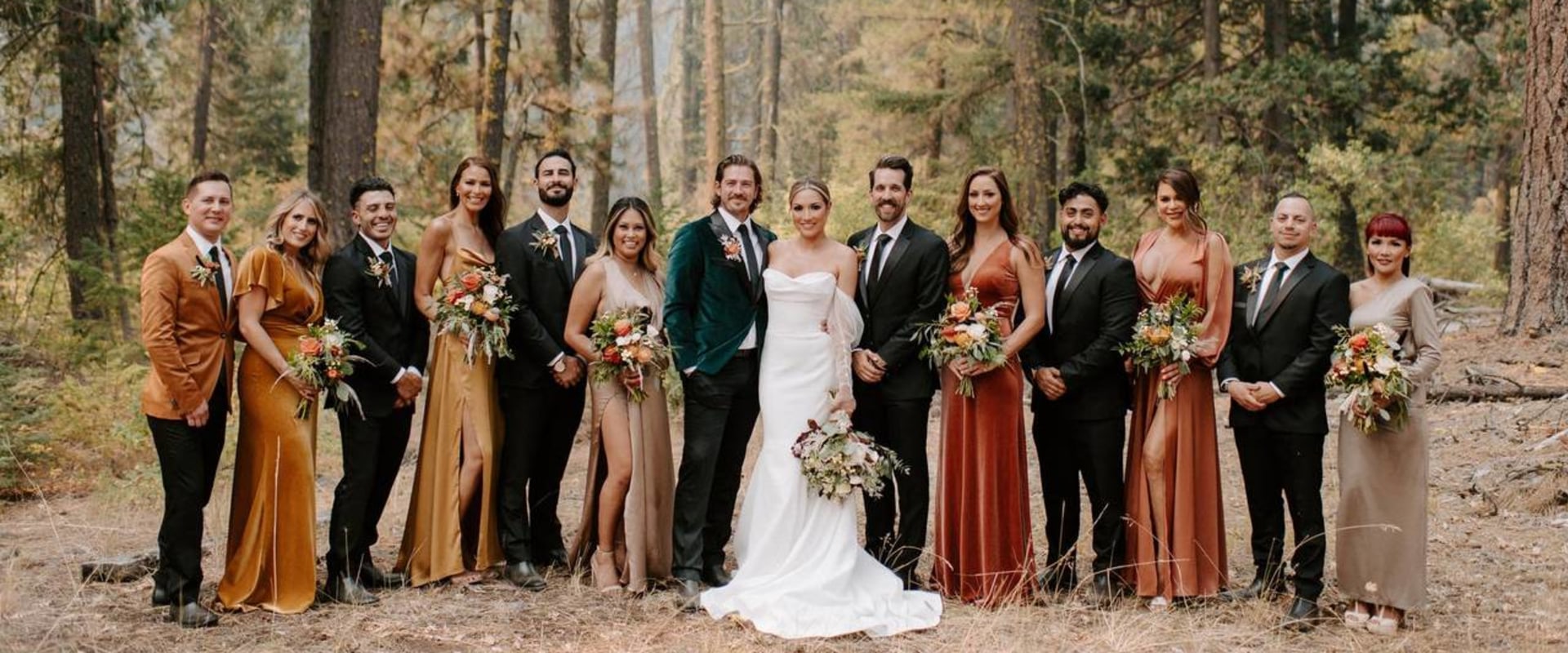Are you planning a photoshoot and want to make sure everything runs smoothly? A timeline is essential to ensure you make the most of your photographer's time and get the best results. But how do you create an efficient timeline for a photoshoot?In this article, we'll discuss the key considerations to keep in mind when planning the timeline for your photoshoot. We'll cover what elements should be included in the timeline, how to make sure your photographer has enough time to capture the best shots, and how to adjust for unexpected delays or challenges. By the end, you'll have a clear understanding of how to create a timeline that will help you make the most of your photoshoot. Planning ahead is one of the most important steps for a successful photoshoot.
A well-thought-out timeline will keep you on track, help you capture all of the shots you need, and ensure that the photoshoot runs smoothly. To plan a successful timeline for your photoshoot, there are a few key steps to follow:Planning Ahead: Taking the time to plan ahead is essential for a successful photoshoot. It allows you to create a realistic timeline and understand what you need to do in order to get the shots you want. When planning ahead, consider the following: the location and time of day, equipment needed, props needed, any special effects you may need, and any other items that may be necessary for the shoot.
Additionally, make sure to check out the area beforehand so that you can plan for any potential obstacles or changes in light.
Setting a Schedule:
Once you have planned ahead, it's time to set a realistic schedule for your photoshoot. Make sure to factor in time for setting up equipment, any breaks you may need, and time for any unexpected delays that may occur. Additionally, allocate enough time for each shot - don't rush through it. Having a schedule will help keep the photoshoot running smoothly and on track.Estimating Time:
Estimating how long each shot will take is an important part of creating a timeline for your photoshoot.When estimating how long each shot will take, consider factors such as the complexity of the shot, how many people are involved in it, and whether special effects are involved. Additionally, factor in time for setting up equipment and adjusting lights.
Time Management:
Managing your time during a photoshoot is essential for success. To ensure that your photoshoot runs smoothly, it's important to stay focused and organized. Have a clear vision of what shots need to be taken and keep track of how much time has been allocated for each one.Additionally, make sure to stay flexible as things can change unexpectedly during a photoshoot.
Breaking Down Tasks:
Breaking down tasks into smaller, manageable pieces is key for a successful timeline. For each shot, break down the tasks into smaller sections such as set-up, shooting, and break-down. This will help keep the photoshoot on track and ensure that all shots are captured.Finishing Up:
Once all of the shots have been taken, it's time to wrap up the photoshoot. To ensure that everything has been captured properly, review your shots with your photographer and make sure nothing has been missed.Additionally, allow some extra time for any unexpected changes or problems that may arise.
Estimating Time
When it comes to planning a photoshoot timeline, it is essential to accurately estimate the amount of time each shot will take. This will help you plan the photoshoot accordingly and avoid any delays or missed shots. Here are some tips for making accurate estimates:Take into account the number of people in the shotThe number of people in a shot has a big impact on the amount of time it will take. For example, if you are taking a group photo, it could take longer to organize everyone and get them into the right positions.Consider the complexity of the shotIf you are shooting a scene with multiple elements, such as props, costumes, or specific lighting, it can take longer to set up than a simple portrait. Make sure you factor this into your timeline.
Allow extra time
No matter how precise your estimates are, there is always the potential for unexpected delays or problems. To be safe, it is best to add a few extra minutes to each shot so that you have some wiggle room if needed.Test out your setup
Before the photoshoot begins, take some test shots with your camera and lighting setup to get an idea of how long each shot will take.This will help you make more accurate estimates for your timeline.
Planning Ahead
Planning ahead is essential for a successful photoshoot. It not only helps you stay on track and ensure that you capture all the shots you need, but it also prevents costly mistakes. Planning ahead allows you to make the most of the time available during the photoshoot, and ensure that you are well-prepared for any unexpected events or issues that may arise. When planning your photoshoot, it is important to consider the following:Location:It is important to choose a location that is suitable for the type of photos you wish to take. Consider the natural light, the space available, and any potential distractions at the location.Equipment:Be sure to bring all the necessary equipment to your photoshoot. This includes cameras, lenses, lighting equipment, and any other items that may be needed for the shoot.
Timing:
It is important to plan your photoshoot at a time when the light will be best for the type of photos you are trying to take. Consider the time of day, season, and weather conditions when selecting a time for your photoshoot.Preparation:Before the photoshoot, it is important to review any instructions or guidelines provided by the photographer, and make sure that you are familiar with the location. Additionally, it is a good idea to prepare any props or other items that may be needed for the shoot. By taking the time to plan ahead, you can ensure that your photoshoot runs smoothly and you get the results you are looking for.
Time Management
When it comes to planning the timeline for your photoshoot, time management is key. You'll need to set time limits for each shot and take regular breaks to ensure that you stay on track and capture all the images you need. Start by estimating how long each shot will take. Be realistic about the time you need for each image or video.If you have a lot of shots, break them up into smaller chunks to make it easier to manage your time. Once you have an estimated timeline, take regular breaks throughout the photoshoot. This will give you time to review the shots you've taken and make sure everything is running smoothly. Breaks also give you a chance to recharge and refocus, so you can be sure that you are capturing quality images. Finally, don't forget to factor in time for editing and post-processing. This is an essential part of any photoshoot, and it can take longer than you think.
Allocate enough time for post-processing to make sure the end product looks its best.
Finishing Up
Once you've completed the photoshoot, it's time to wrap up the process. To make sure that all the shots are captured and that you have the right shots to work with, there are a few steps you should take before you call it a day.Review the Shots:
At the end of the photoshoot, take some time to review the shots. Make sure that you have all the shots you need and that they are in focus and properly lit. If there are any shots that need to be retaken, now is the time to do it.Archive the Shots:
Once you've reviewed the shots and made sure they are all good, it's important to archive them.This will ensure that the shots are safe and easily accessible for future use. You can store them on an external hard drive or a cloud storage service. Whichever option you choose, make sure to back up your photos in multiple locations.
Breaking Down Tasks
When it comes to planning the timeline for your photoshoot, it's important to break down tasks into smaller, manageable pieces. This will help you prioritize tasks and ensure that everything gets done in a timely and efficient manner.Here are some tips on how to break down tasks for your photoshoot:1.Identify what needs to be done.Before you can begin breaking down tasks, you'll need to identify what needs to be done. Make a list of all the tasks that need to be completed, such as researching locations, booking models, and purchasing equipment. This will help you create a comprehensive timeline.
2.Estimate how much time each task will take.
Once you have a list of tasks, you'll need to estimate how much time each one will take. This will help you prioritize tasks and make sure that everything is completed on time.3.Break down larger tasks into smaller ones.
Once you have identified the tasks that need to be completed and estimated how much time each one will take, you'll need to break down larger tasks into smaller ones.For example, if you need to book models, break the task down into smaller steps, such as researching models, reaching out to them, and confirming bookings.
4.Prioritize tasks.
Once you have broken down tasks into smaller ones, it's time to prioritize them. This will help you make sure that the most important tasks are completed first. You can prioritize tasks by importance or by deadline.Setting a Schedule
Creating a timeline for your photoshoot is essential for a successful shoot. A well-planned timeline will help you stay on track and ensure that you capture all the shots you need.When setting a schedule for your photoshoot, there are several elements you should consider. The first step is to determine the amount of time you need. This will depend on the scope of your project and the complexity of the shots you need to capture. If you’re shooting a large project, such as a wedding, you may need multiple days to capture all the shots. If you’re shooting a smaller project, such as headshots, you may only need an hour or two. Once you’ve determined the amount of time you need, it’s important to create a realistic timeline.
Consider the available light, the number of shots you need to capture, and any special equipment or props that will be needed. It’s also important to factor in any setup or break down time. It’s also important to allocate time for post-processing. This is especially true if you plan to deliver high-quality images. You may need to spend time editing images or retouching them in Photoshop or Lightroom. Finally, it’s important to factor in any travel time that may be required.
If you’re shooting in multiple locations, make sure you account for any travel time between each location. By setting a realistic schedule for your photoshoot, you can ensure that everything runs smoothly and that you capture all the shots you need. Creating a timeline for your photoshoot is an important step that can help ensure that everything goes smoothly and that all the shots are captured. By planning ahead, setting a schedule, estimating time, managing your time, breaking down tasks, and finishing up properly, you can make sure that your photoshoot runs smoothly. A well-planned timeline can help you stay on track and make sure that you get all the shots you need.




